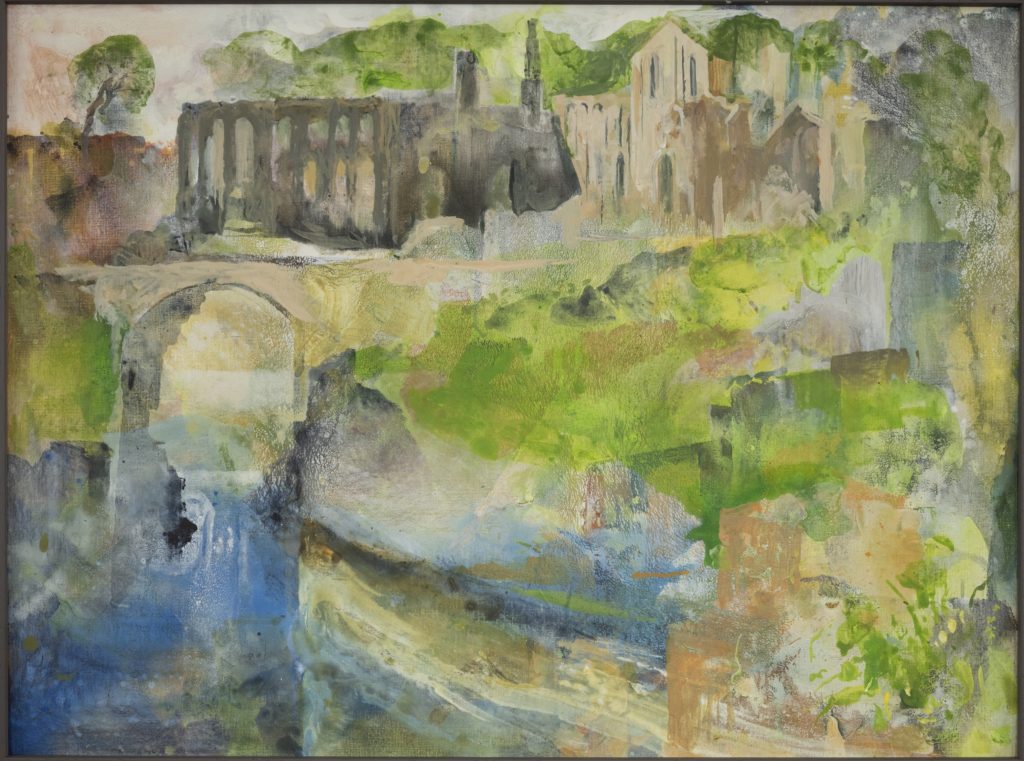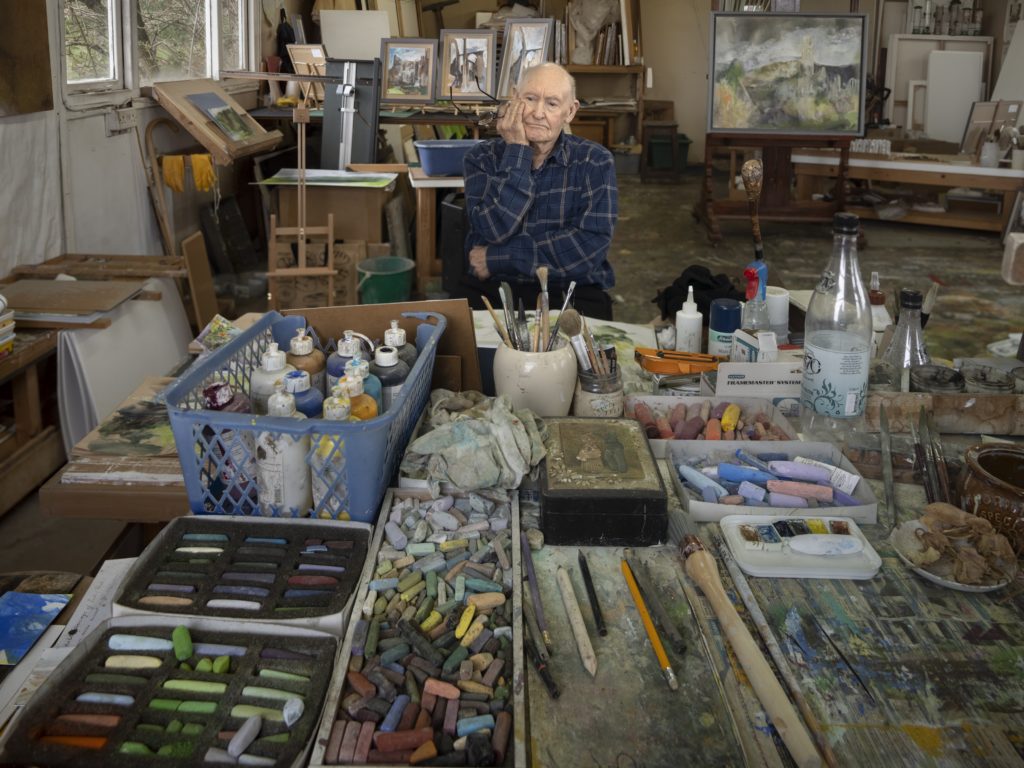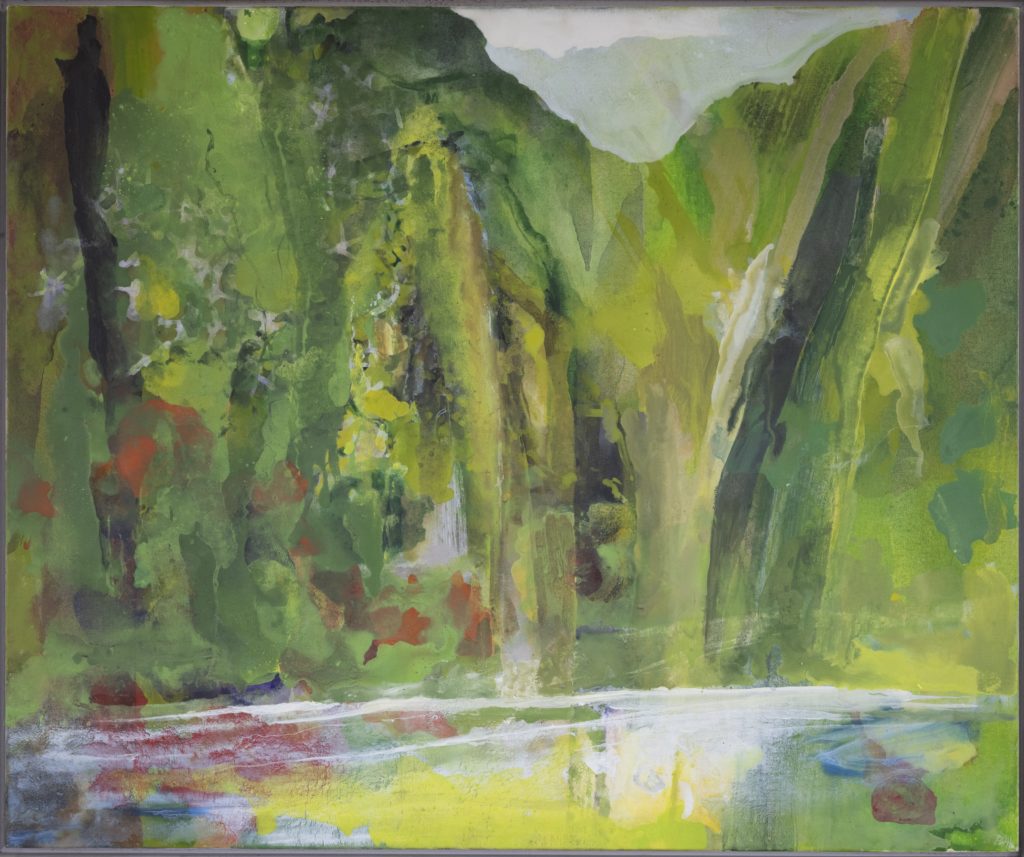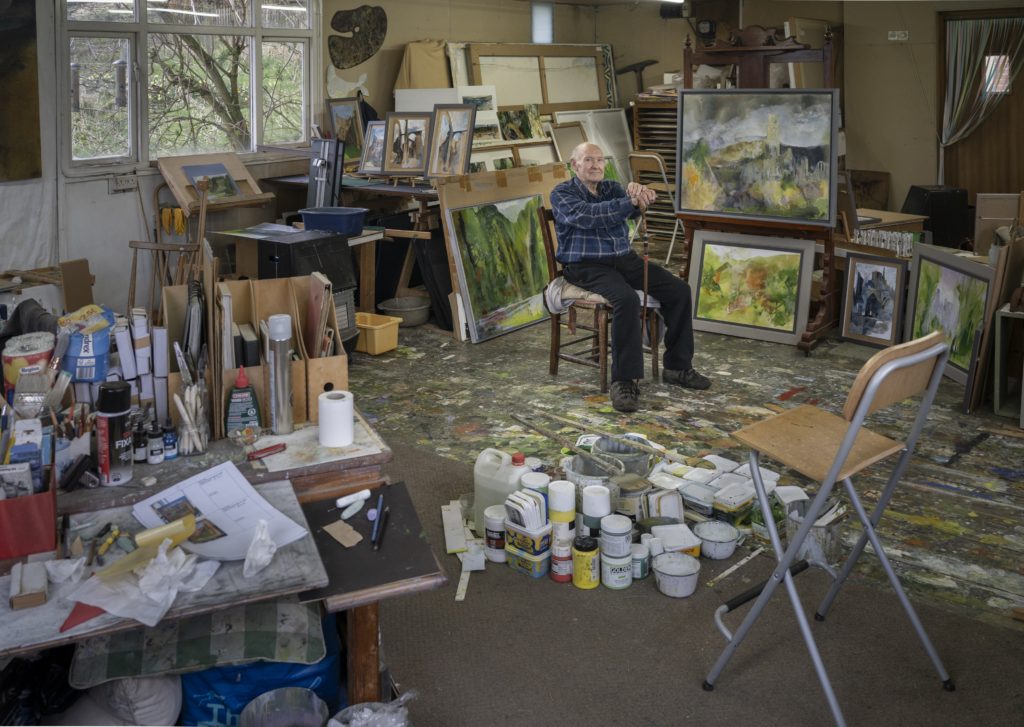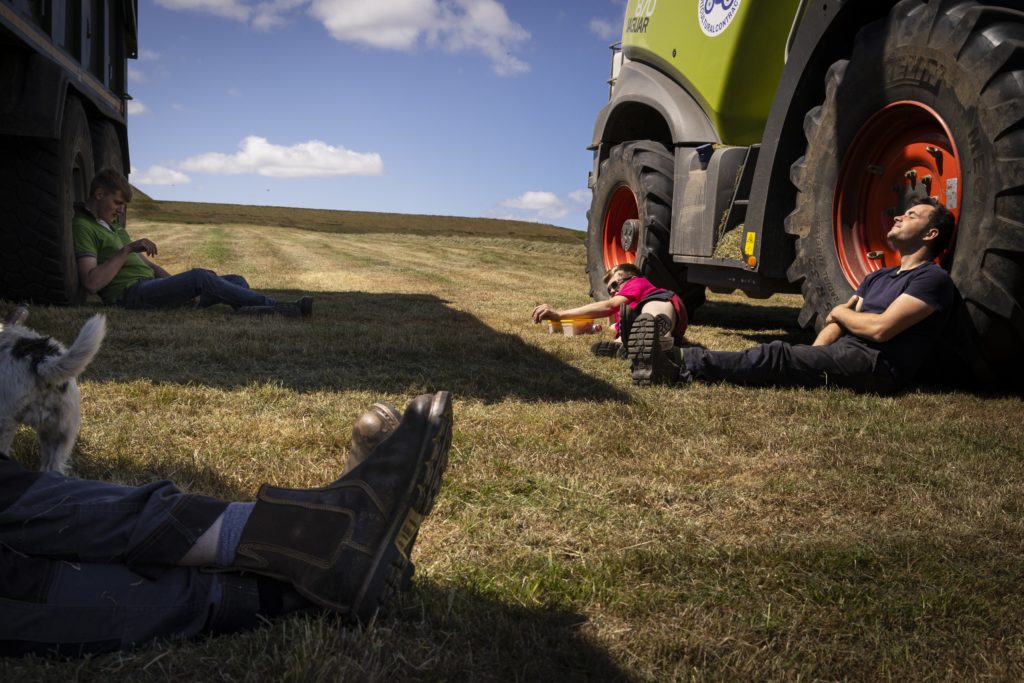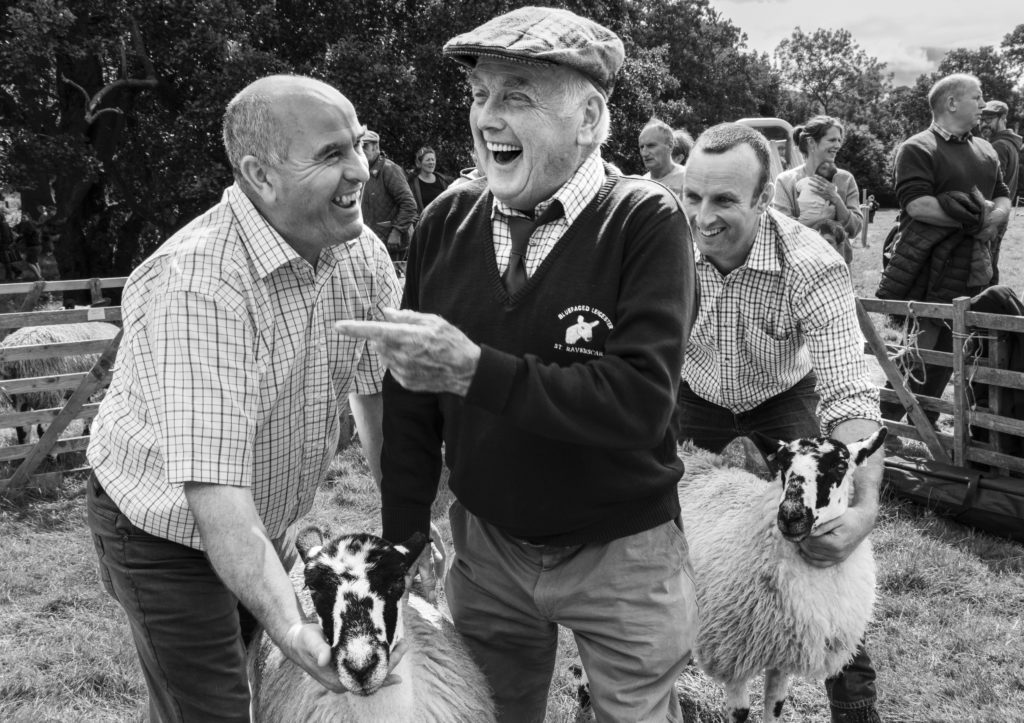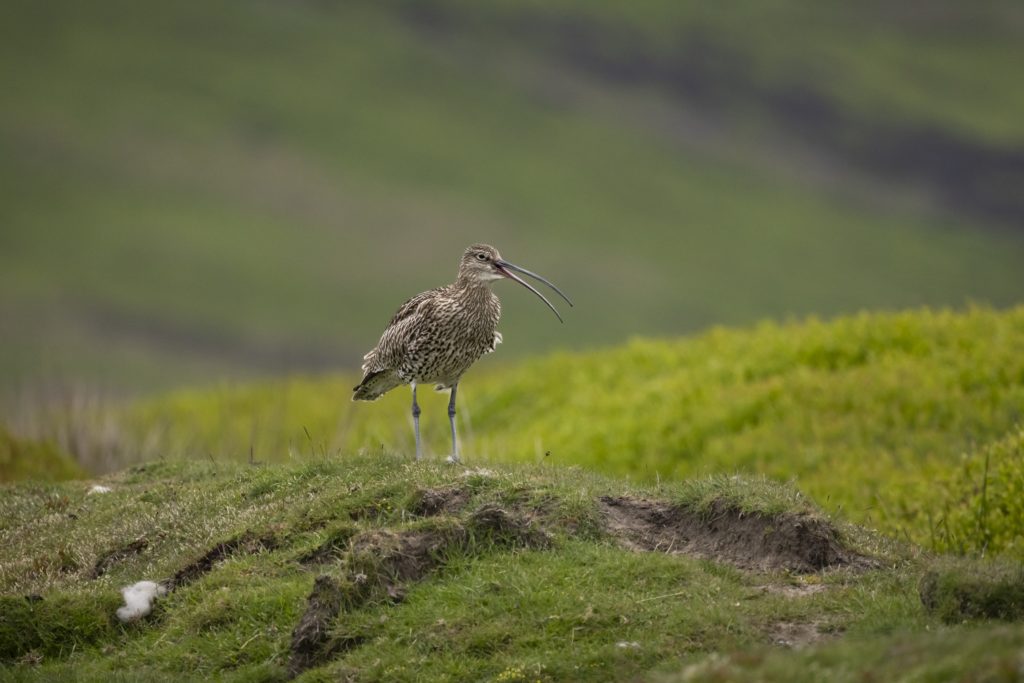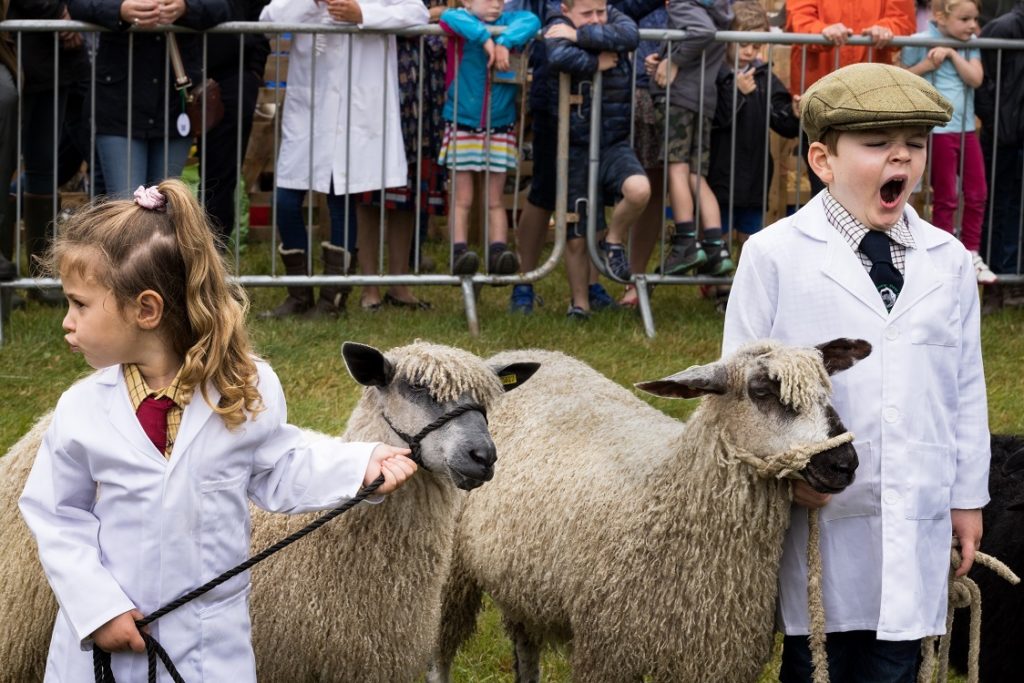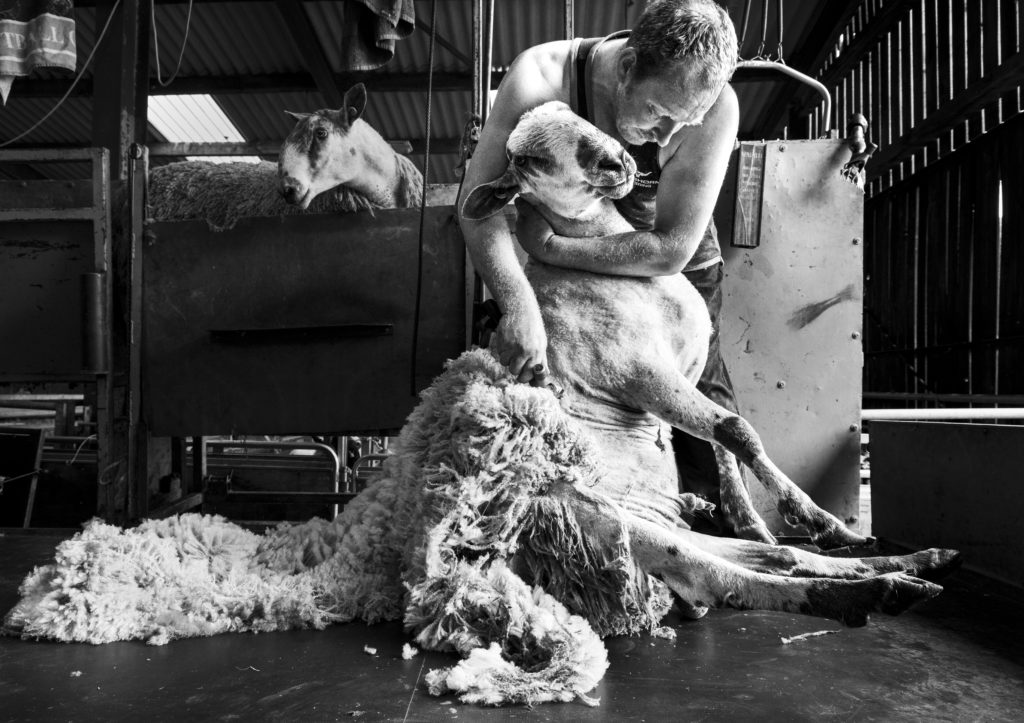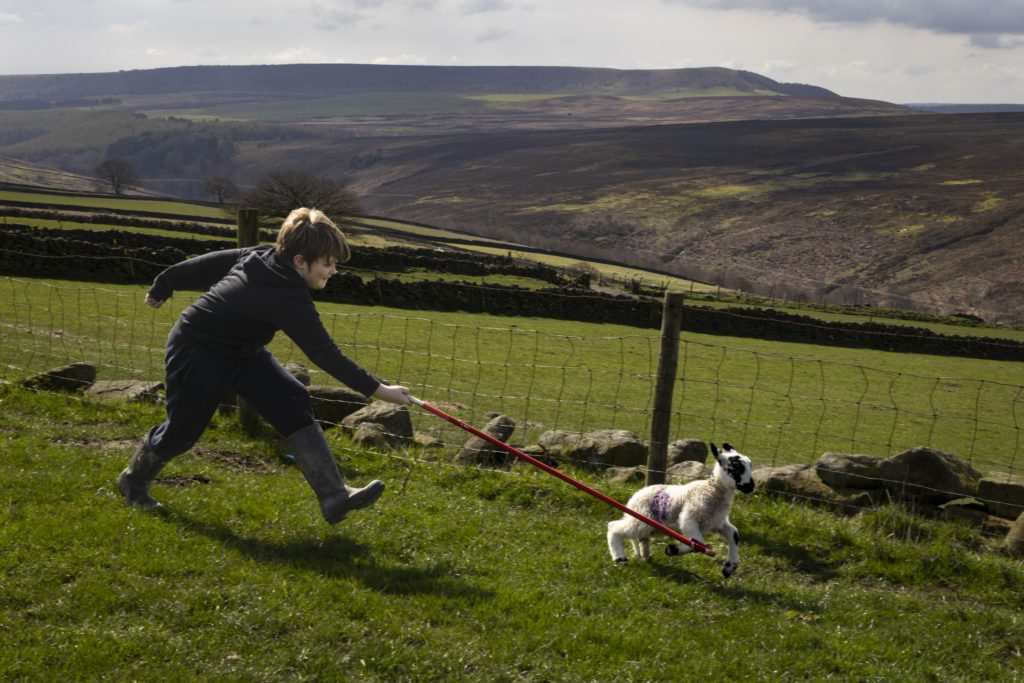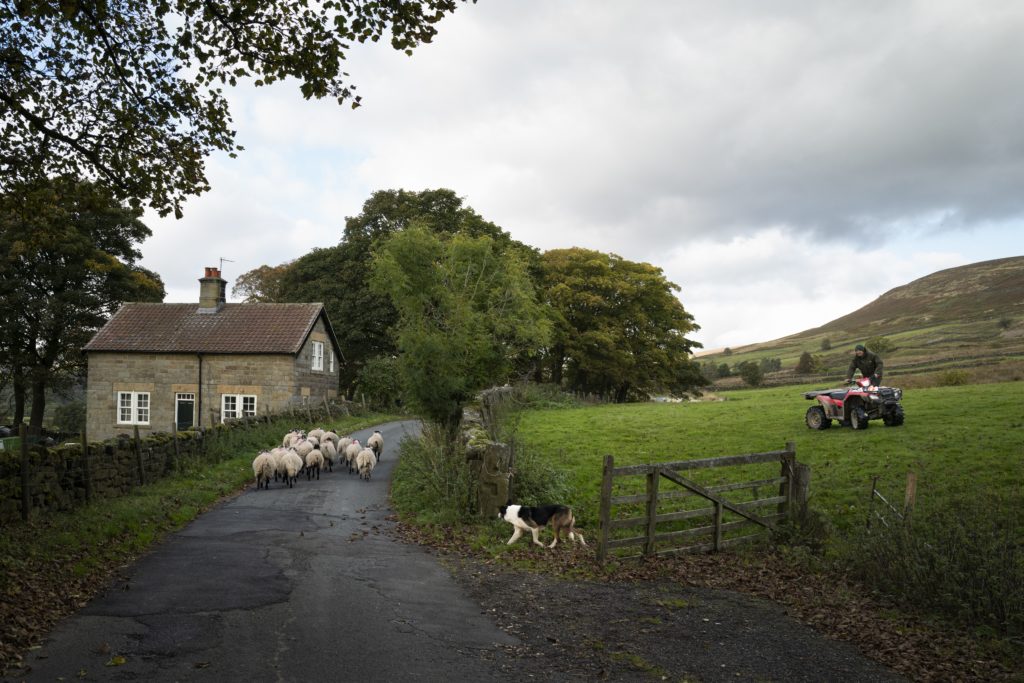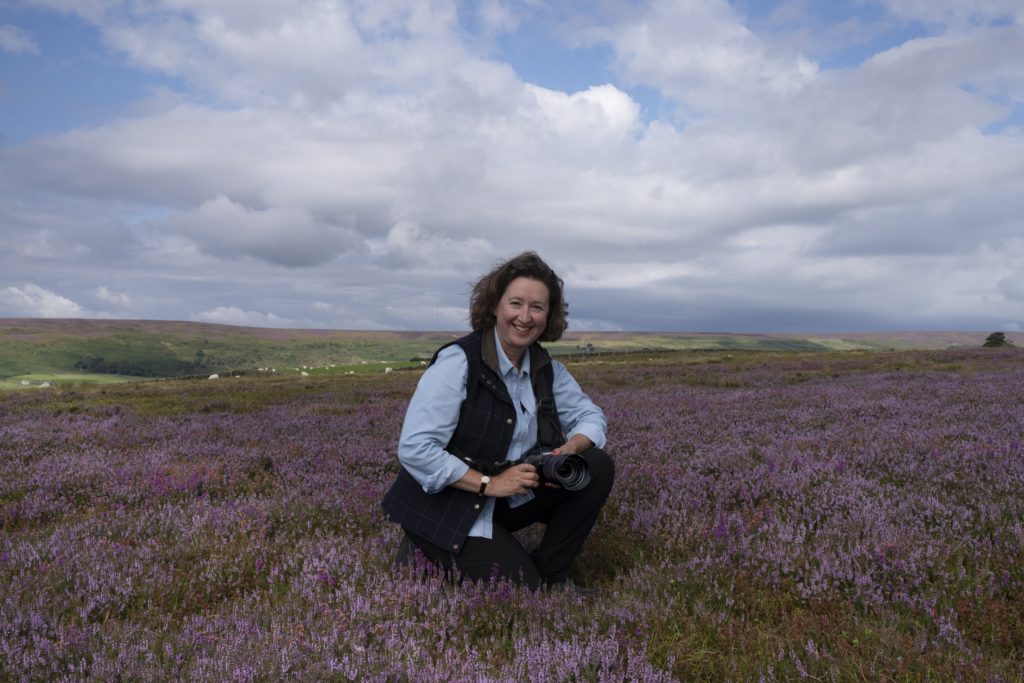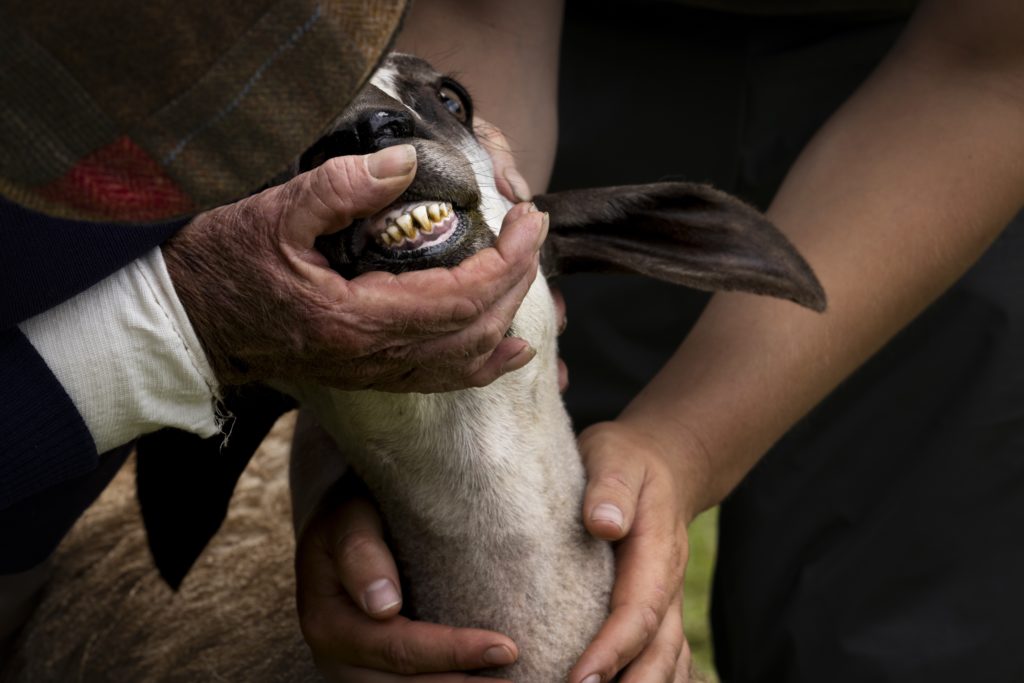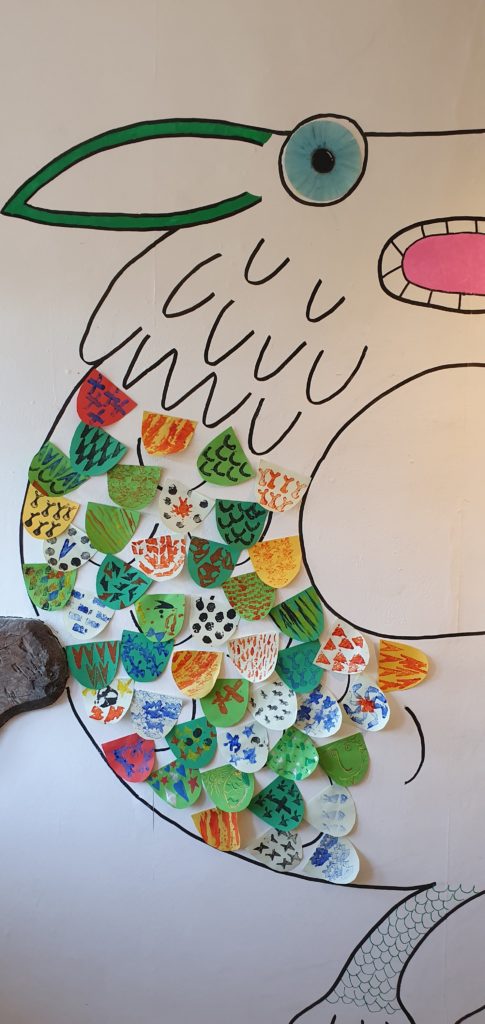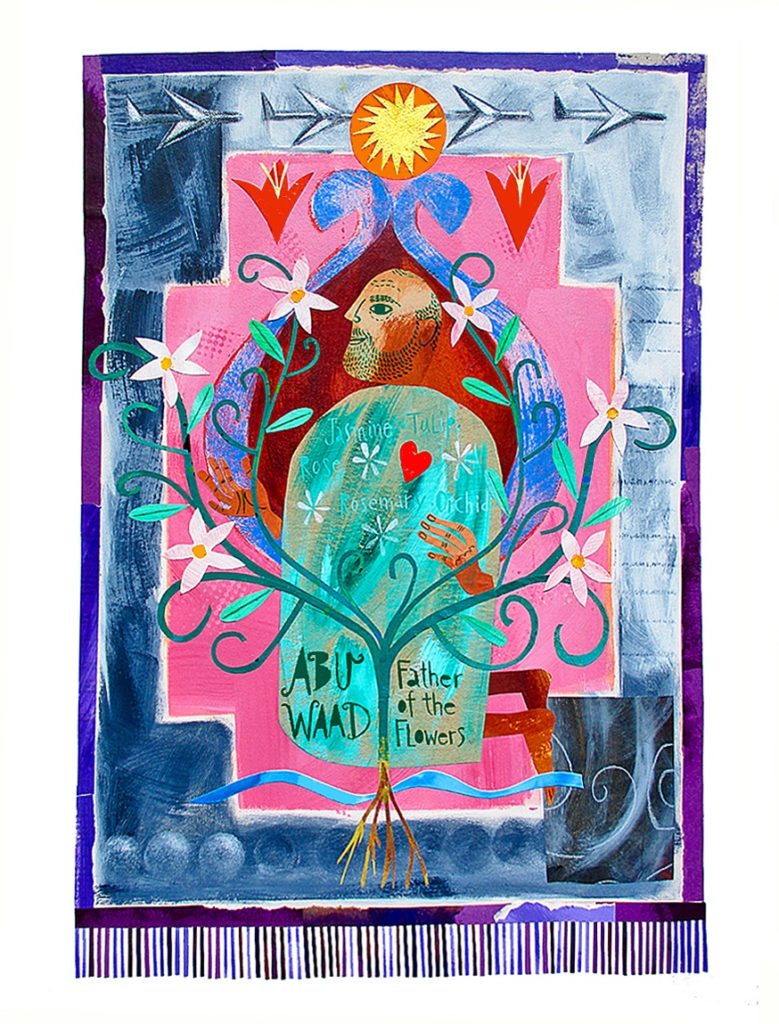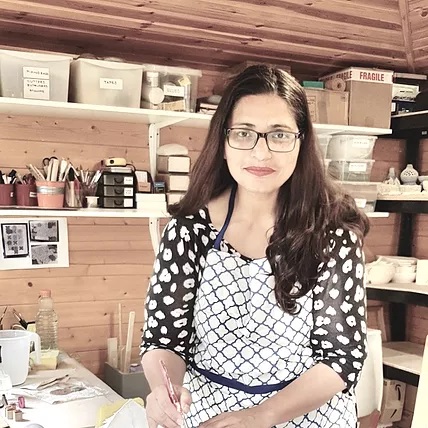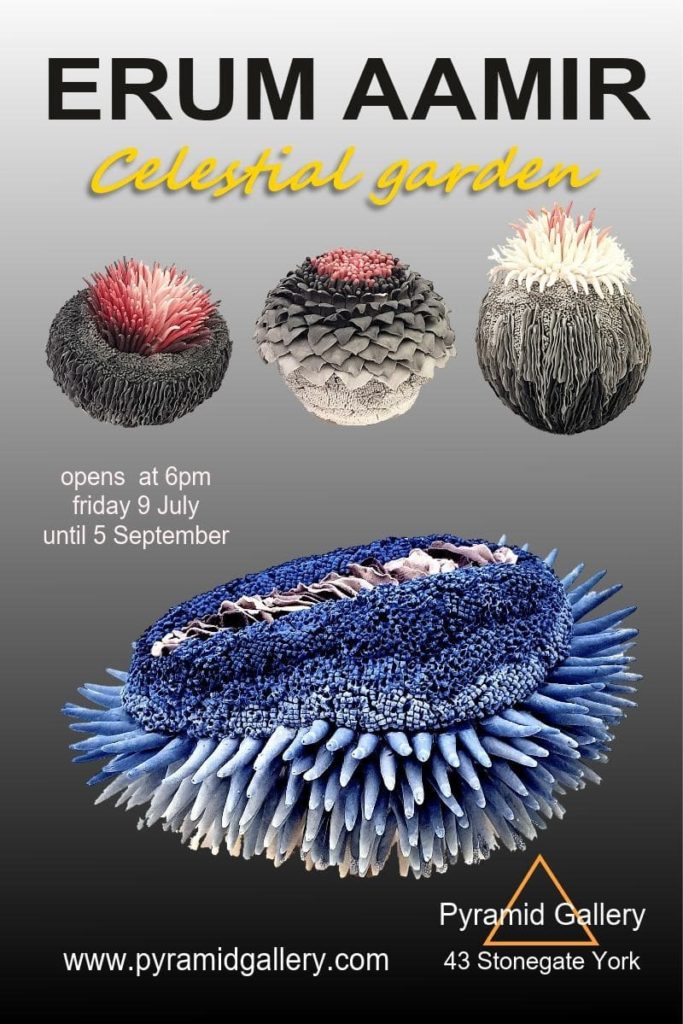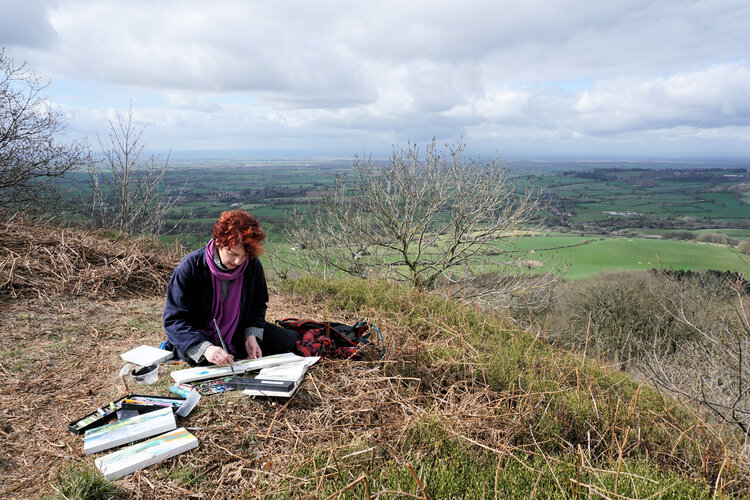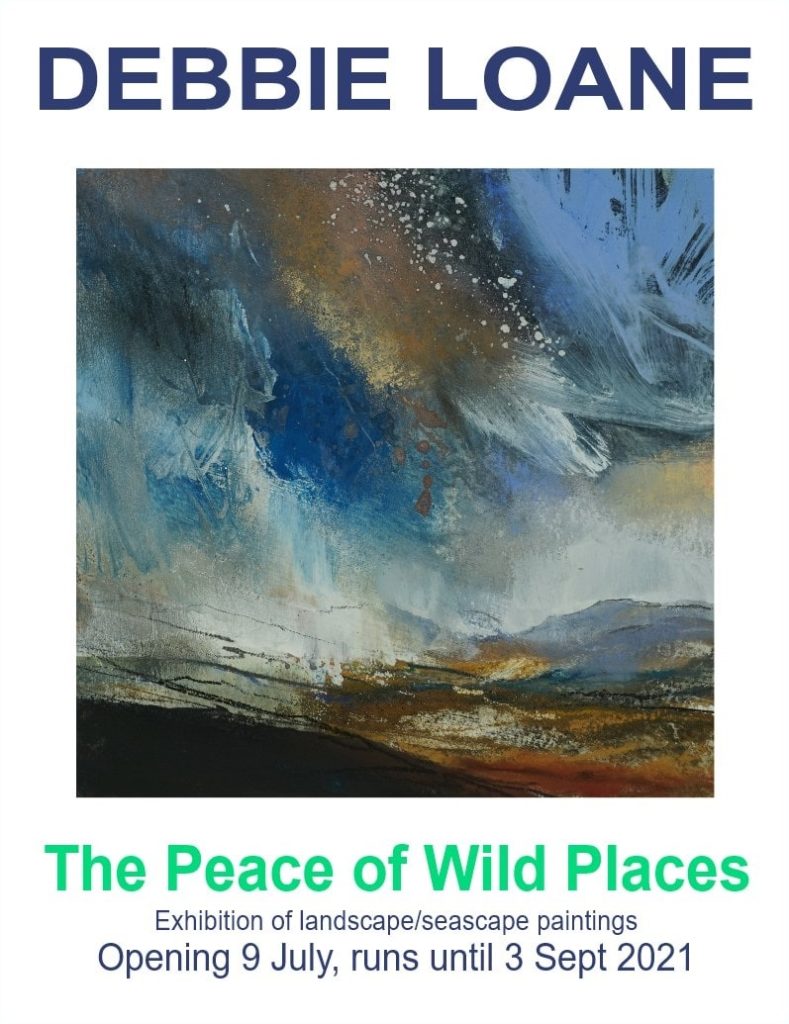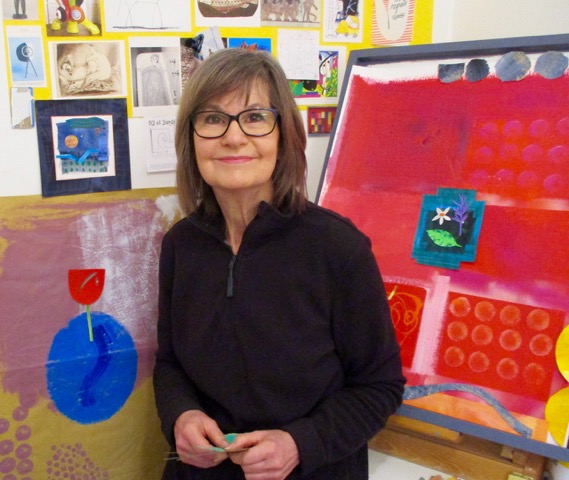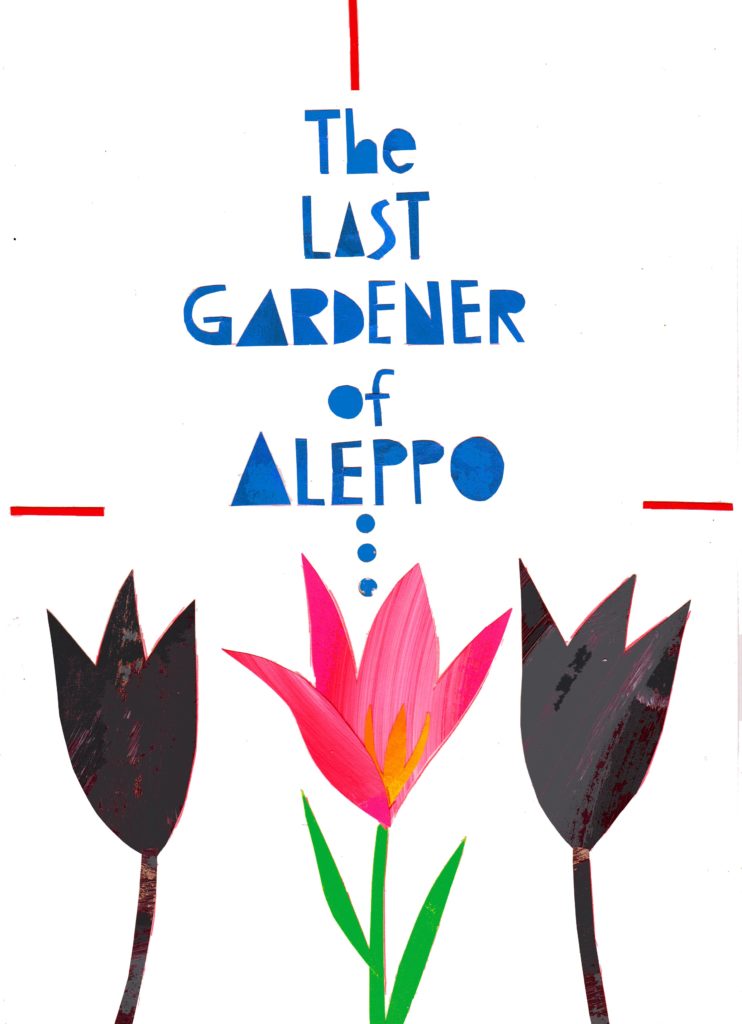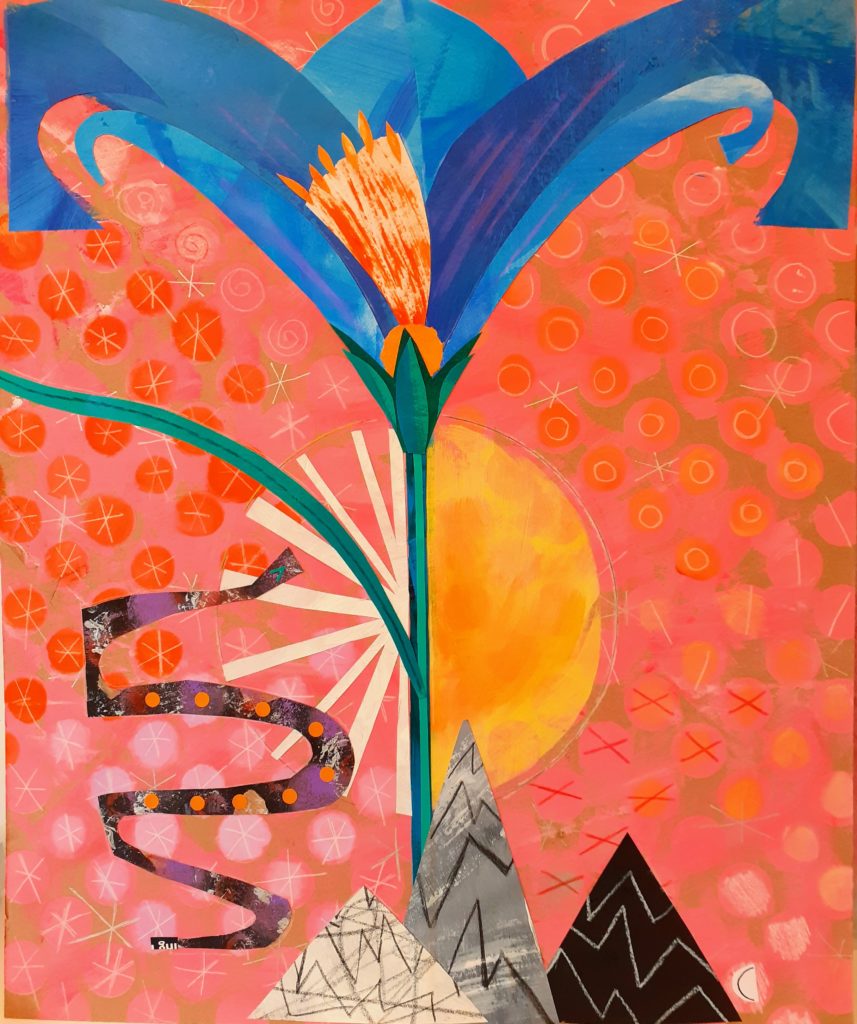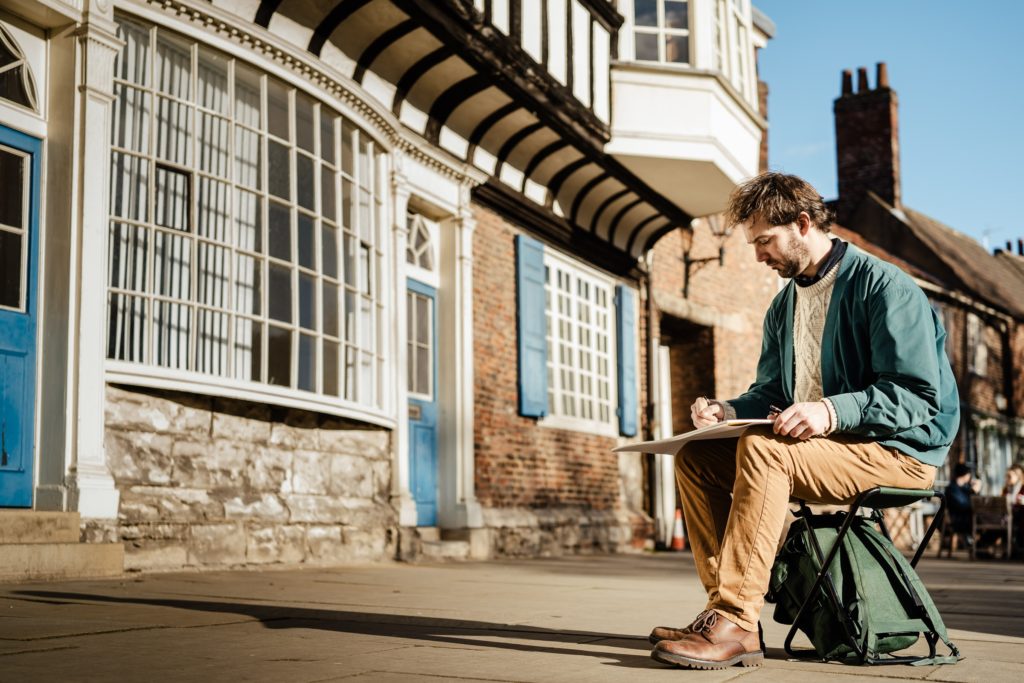
FROM dollops of Dolly Parton advice to Stewart Lee’s werewolf encounter, devilish storytelling to a Cinderella prequel, Charles Hutchinson, cherry picks highlights for the days ahead.
Exhibition of the week: The Other Collective, Bluebird Bakery, Acomb, York, until March 13
CURATED by Bluebird Bakery, The Other Collective brings together the work of Lu Mason, Ric Liptrot, Rob Burton, Liz Foster and Jill Tattersall.
“These wonderful artists were all missed off the billing for York Open Studios 2025 and we felt that was a real shame,” says Bluebird boss Nicky Kippax. “So The Other Collective was born and we hope the work will get a lot of interest from our customers.”
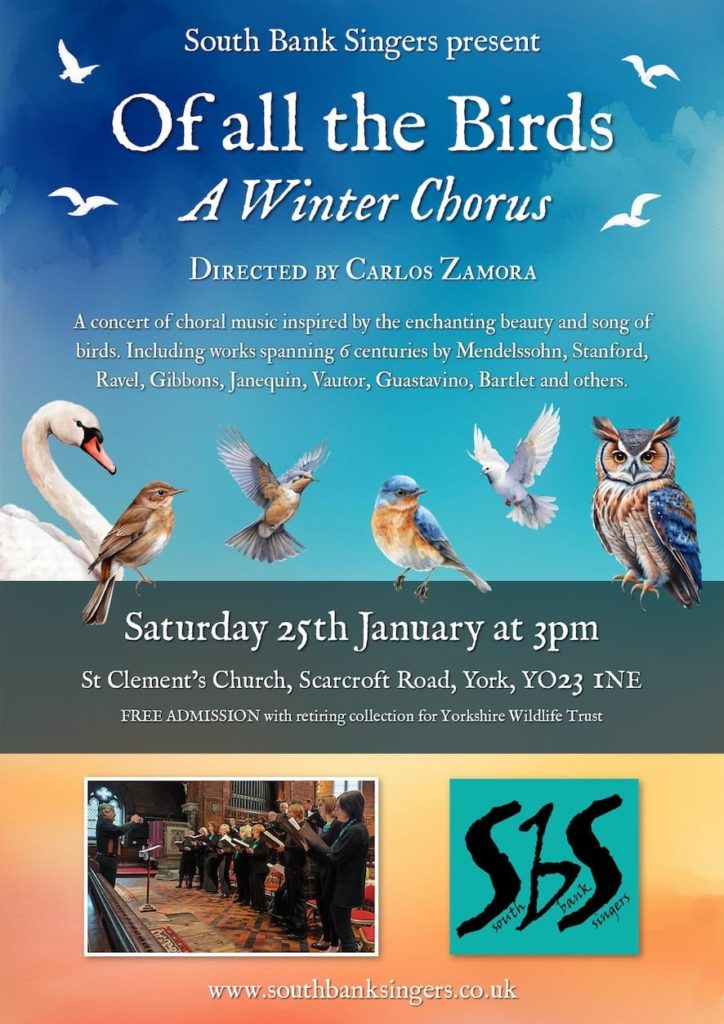
Nature concert of the week: South Bank Singers, Of All The Birds, A Winter Chorus, St Clement’s Church, Scarcroft Road, York, today, 3pm
SOUTH Bank Singers present Of All The Birds, A Winter Chrous, a Saturday afternoon concert of choral music inspired by the enchanting beauty and song of birds. Directed by Carlos Zamora, the choral programme spans six centuries, taking in Mendelssohn, Stanford, Ravel, Gibbons, Janequin, Vautor, Guastavino and Bartlet. Admission is free with a retiring collection for the Yorkshire Wildlife Trust.

Fundraiser of the week: A Million Dreams, A Charity Broadway Spectacular, Grand Opera House, York, tonight, 7.30pm
STEVE Coates Productions present an evening of musical magic, song, dance and laughter by York talent in aid of The Snappy Trust, a charity “dedicated to maximising the personal development of children and young people with wide- ranging disabilities”.
Bev Jones Music Company, Flying Ducks Youth Theatre and a ten-piece band perform songs from Broadway and West End shows such as Wicked, Hamilton, Frozen, The Phantom Of The Opera, Les Miserables and The Greatest Showman. Box office: atgtickets.com/york.
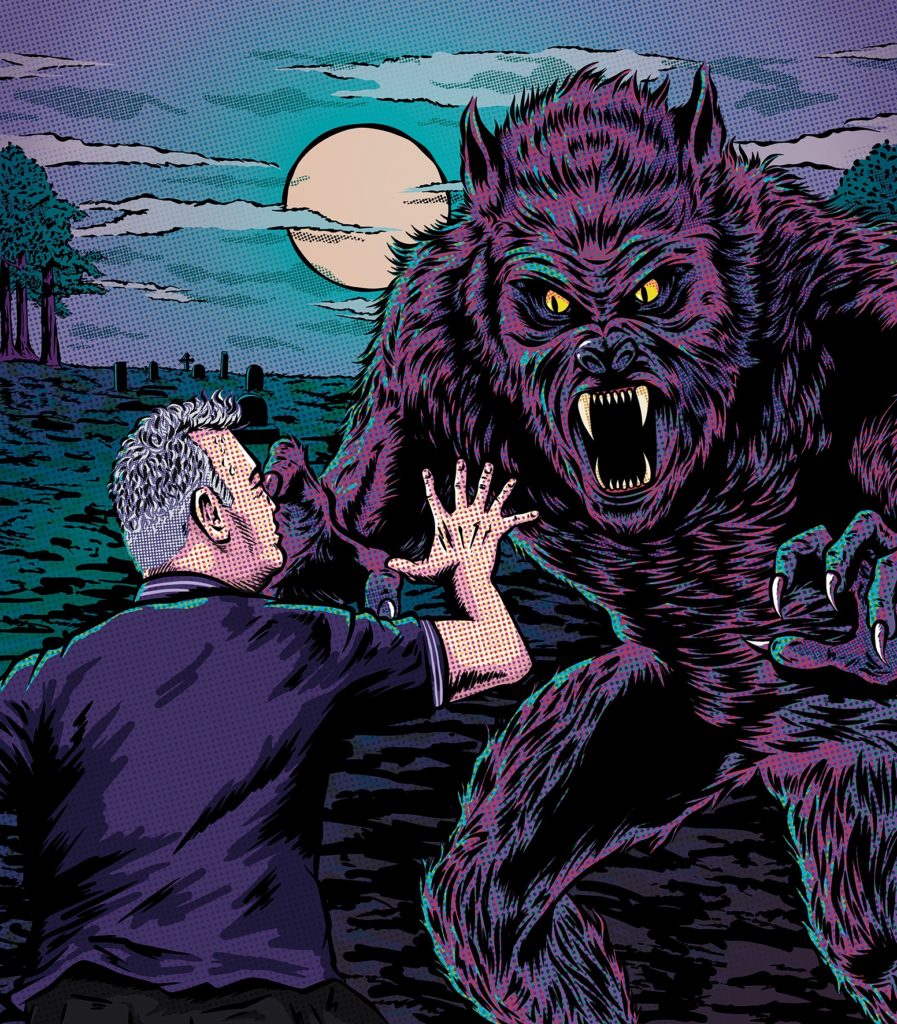
Comedy gigs of the week: Stewart Lee Vs The Man-Wulf, York Theatre Royal, January 28 to February 1, 7.30pm
IN Stewart Lee Vs The Man-Wulf, Lee shares the stage with a tough-talking werewolf comedian from the dark forests of the subconscious who hates humanity. The Man-Wulf lays down a ferocious comedy challenge to the “culturally irrelevant and physically enfeebled Lee”: can the beast inside us all be silenced by the silver bullet of Lee’s deadpan stand-up? Tickets advice: Hurry, hurry as all shows are closing in on selling out; 01904 623568 or yorktheatreroyal.co.uk.

Musical of the week: Here You Come Again, Grand Opera House, York, January 28 to February 1, 7.30pm plus 2.30pm Wednesday and Saturday matinees
SIMON Friend Entertainment and Leeds Playhouse team up for the tour of Here You Come Again, starring and co-written by Broadway actress Tricia Paoluccio, who visits York for the first time in the guise of a fantasy vision of country icon Dolly Parton.
Gimme Gimme Gimme writer Jonathan Harvey has put a British spin on Bruce Vilanch, director Gabriel Barre and Paoluccio’s story of diehard Dolly devotee Kevin (Steven Webb) needing dollops of Dolly advice on life and love in trying times. Parton hits galore help too! Box office: atgtickets.com/york.
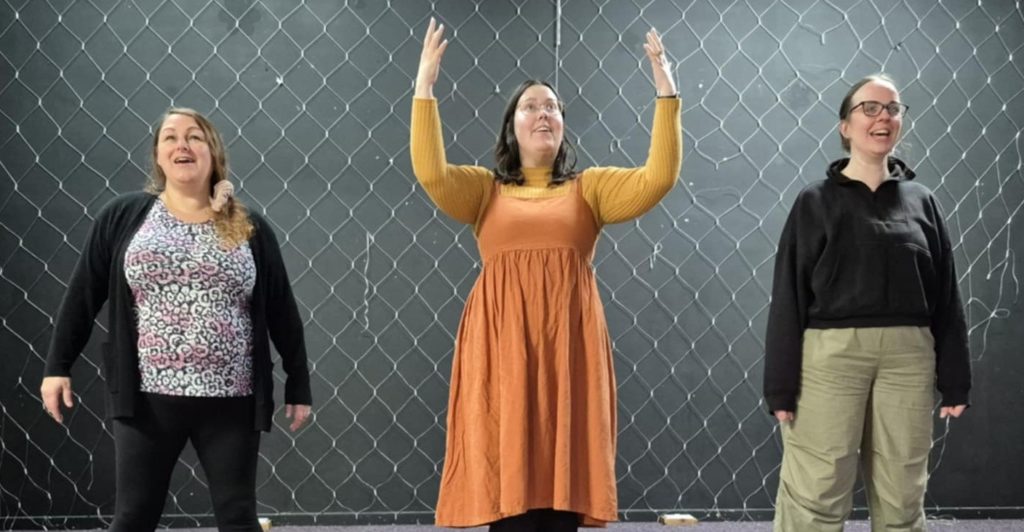
Premiere of the week: Blue Light Theatre Company in Where The Magic Begins!, Acomb Working Men’s Club, York, January 29, 30 and 31, 7.30pm; February 1, 2pm matinee
BLUE Light Theatre Company will forego their annual panto in favour of staging York playwright and actress Perri Ann Barley’s new play Where The Magic Begins!, a prequel to Cinderella based on characters from the original Charles Perrault version of “everyone’s favourite fairytale”.
“We meet many beloved characters in their younger days, such as a young Fairy Godmother, who is about to discover her ‘gift’. We follow her journey as she struggles with a secret that could put her life, and that of her family, in grave danger,” says director Craig Barley. Box office: 07933 329654, at bluelight-theatre.co.uk or on the door.

Cabaret night of the week: CPWM Presents An Evening With Hannah Rowe, The Old Paint Shop, York Theatre Royal Studio, January 30, 8pm
YORK promoters Come Play With Me (CPWM) welcome Hannah Rowe to The Old Paint Shop’s winter season. This young singer writes of experiences and shifts in life, offering a sense of reflection within her rich, authentic, jazz-infused sound.
The Old Paint Shop shows by irreverent York covers combo Hyde Family Jam (today, 2pm and 8pm) and Karl Mullen, upstanding York pianist Karl Mullen (January 31, 8pm) have sold out. Box office: 01904 623568 or yorktheatreroyal.co.uk.
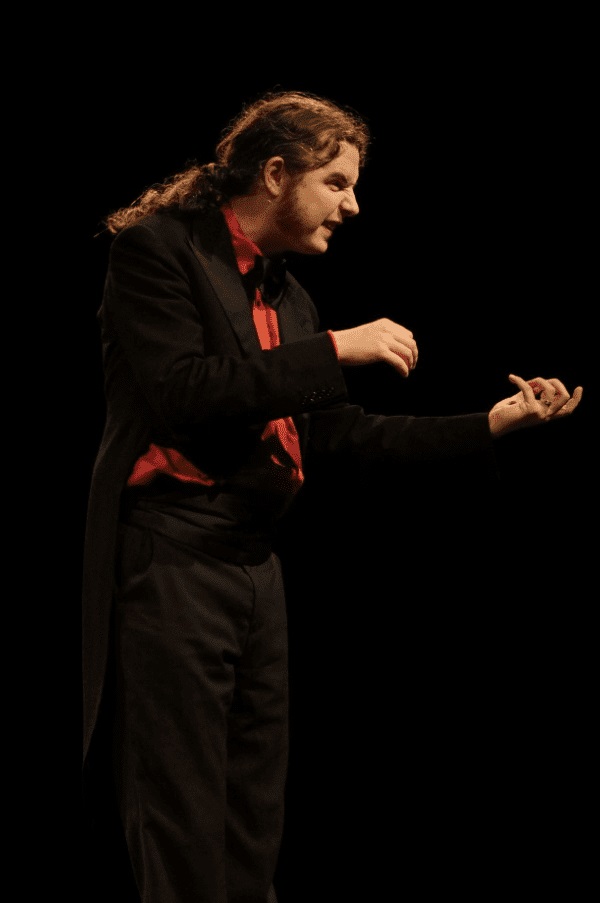
Devilish delight of the week: Tim Ralphs and Adderstone, Infernal Delights, Rise@Bluebird Bakery, Acomb, York, January 31, doors 7.30pm
TIM Ralphs and York alt-folk storytellers Adderstone serve up a winter night’s double bill of dark delights. Let Adderstone’s Cath Heinemeyer and Gemma McDermott lead you down the steps to the underworld with story-songs from wild places in their Songs To Meet The Darkness set.
In Beelzebub Rebranded, Tim Ralphs’s stand-up storytelling exhumes the bones of ancient Devil stories and stitches them into new skins for fresh consumption in his wild reimagining of folktale, fairytale and urban legend. Box office: ticketsource.co.uk/adderstone/infernal-delights/e-xjjber.
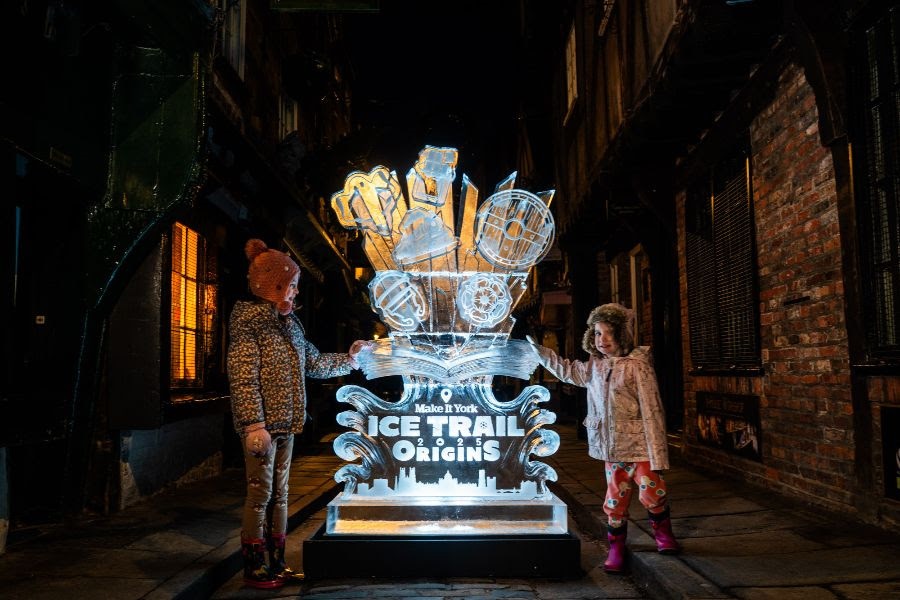
Whatever the weather, here comes the new ice age: York Ice Trail 2025, February 1 and 2
YORK’S “free weekend of frosty fun” returns with a 2025 theme of Origins as York’s streets are turned into an icy wonderland of frozen tableau in this annual event run by Make It York. Among the 30 ice sculptures showcasing 2,000 years of city history will be a Roman shield, a Viking helmet, a chocolate bar, a drifting ghost, a majestic train and a Yorkshire rose, all captured in the language of ice by Icebox. Full details can be found at visityork.org/york-ice-trail.
Before all that ice, windswept York has another free event on the city streets and beyond this weekend: York Residents’ Festival today and tomorrow. For the full list of offers, head to: visityork.org/offers/category/york-residents-festival.

Gig announcement of the week: Snow Patrol, TK Maxx Presents Scarborough Open Air Theatre, June 27
THE Northern Irish-Scottish indie rock band Snow Patrol are to return to the Scarborough coast for the first time since July 2021, led as ever by Gary Lightbody, accompanied by long-time lead guitarist Nathan Connolly and pianist Johnny McDaid.
Emotionally charged anthems such as Chasing Cars, Run and Open Your Eyes will be complemented by selections from 2024’s The Forest Is The Path, their first chart topper in 18 years. Box office: ticketmaster.co.uk and scarboroughopenairtheatre.com.
In Focus: Hayden Thorpe & Propellor Ensemble, National Centre for Early Music, York, January 29, doors 7pm, start 7.30pm

PLEASE Please You and Brudenell Presents bring Hayden Thorpe & Propellor Ensemble to the NCEM to perform Ness on Wednesday, with the promise of a “sonically spectacular and transformational live show”.
Thorpe, 39-year-old former frontman and chief songwriter of Kendal and Leeds band Wild Beasts, promotes his September 2024 album, Ness, released on Domino Records.
Using a process of redaction, Cumbrian musician Thorpe brought songs to life from nature writer Robert Macfarlane’s book Ness, inspired by Orford Ness, a ten-mile long shingle spit on the coast of Suffolk that housed the former Ministry of Defence weapons development site during both World Wars and the Cold War.
Acquired by the National Trust in 1993 and left to re-wild, to this day it remains a place of paradox, mystery and constant evolution.
Thorpe’s ode to Orford Ness, the physical place and the book, features Macfarlane’s words and illustrations by Stanley Donwood. He premiered Ness with Propellor Ensemble at Orford Ness on September 28 and 29 last year.
Here Hayden discusses working with Robert Macfarlane and Propellor Ensemble, the Cold War, nature and past York experiences with CharlesHutchPress.
Do you have any past experiences of York, whether on a school visit or whatever, Hayden?
“My parents used to take us to the Jorvik Viking Museum when me and my siblings were young. I was always amazed by the fake open sewer smell they would pump into the space.”
When did you last play in York, either solo or with Wild Beasts?
“I believe it was in 2006 or 2007. A rather long time ago. In any case, it’s been too long. It was somewhere quite familiar to me when Wild Beasts were coming up in Leeds. We’d make a regular dash across.”
How did the Ness project come about with Robert Macfarlane?
“In a really old fashioned manner. I fan-mailed Rob and he wrote back with all the generosity and open heartedness of his books. He’s as good as his word in the truest sense.
“Rob and I decided to perform some improvised music to his reading of Ness. It was a Eureka moment. The atmosphere and drama of the sound we made demanded that we commit to expanding it.”
Did you visit Orford Ness, now the Orford Ness National Nature Reserve, for research purposes?
“Yes. Orford Ness is an astonishing place. It’s a monument to rejuvenation and a monument to destruction. The very best and the very worst of us.”
By the way, Hayden, York has a Cold War Bunker Museum, in Monument Close, Holgate: a two-storey, semi-subterranean bunker built in 1961 to monitor nuclear explosions and fallout in Yorkshire, in the event of nuclear war.
“I had no idea that a Cold War museum existed in York. That’s fabulous. Bizarrely, I’ve developed a Cold War romance. I guess the conflicts and hostilities we face today have brought these conversations back into our everyday consciousness.”
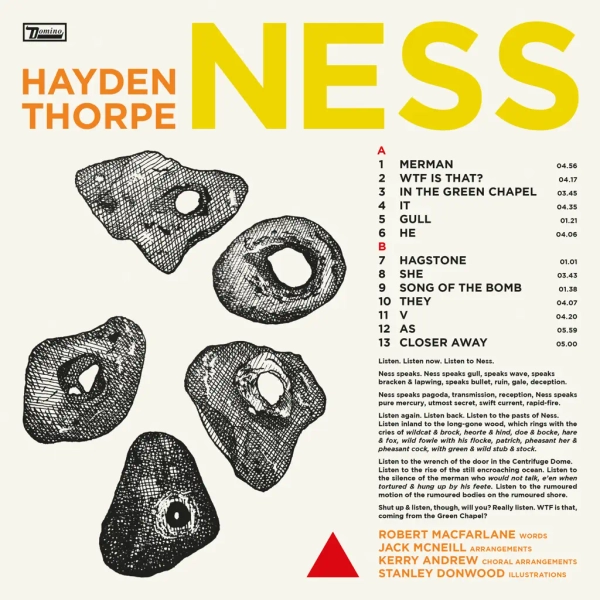
How have you turned the album into a concert performance?
“The album is very much made of sounds we’ve made with our hands and lungs, so with enough pairs of those it actually translates in a very true way. The unusual instrumentation, with orchestral percussion and clarinet foregrounded alongside me, creates a very distinct ‘Ness’ sound. The shows have been really emotional as a result.”
Were you tempted to feature strings in the Ness project for their emotional heft?
“We deliberately did not use strings. We opted to use the elemental forces at my play at Orford Ness: wind and resistant materials like metal and wood. It creates a haunted, volatile soundscape.”
Which Propellor Ensemble members will play in York?
“Jack McNeill plays clarinet and Delia Stevens plays orchestral percussion. Molly Gromadzki performs the spoken-word parts and sings in the choir. Brigitte Hart and Helen Ganya make up the choral section. It’s been a joy to work with such expressive and capable performers.”
What does a “sonically spectacular and transformational live show” entail?
“Something which is sonically ambitious and immersive. Once we start the show we don’t stop, it’s the album in full back to front. We want to take the audience to Ness, have them come face to face with the monster.”
Why was the National Centre for Early Music, in the former St Margaret’s Church in Walmgate, chosen for the York gig rather than The Crescent community venue, a classic working men’s club design?
“We’ve heard such great things about NCEM. Much of the story of Ness takes place ‘In The Green Chapel’, so the work lends itself to a space of worship.”
What is your own relationship with nature? Wild Beasts hailed originally from Kendal, with all that Lake District beauty around you…
“Nature has become increasingly important to my life and work. As artists we’re forced to ask what side of the conversation we sit on, one which acknowledges the existential crisis facing us or one which excuses it. Music can carry non-human voices really effectively. Ness is very much a meditation on that.”
What will be the next project you work on?“
Good question. Ness has certainly expanded my palette. I’ve come to feel maybe my strength is in making strange and ambitious works which would otherwise not get made. It’s crucial to keep the flame burning on works of exploration and oddity in an industry which increasingly incentivises conformity.”
Box office: 01904 658338 or ncem.co.uk.
More Things To Do in York and beyond. Hutch’s List No. 5, from The York Press

The cheek of it: Freida Nipples hosting The Exhibitionists at The Old Paint Shop, York Theatre Royal Studio
FROM exhibitionist burlesque to imaginative dance moments, wildlife illuminations to bend-and-snap musical empowerment, Charles Hutchinson finds February fulfilment.
Cabaret night of the week: Freida Nipples Presents…The Exhibitionists, The Old Paint Shop, York Theatre Royal Studio, February 8, 8pm
YORK’S very own internationally award-winning burlesque artiste Freida Nipples welcomes some of her favourite and most fabulous performance artists from across Great Britain and beyond to The Old Paint Shop cabaret night.
“Get ready to be dazzled, shocked and in awe,” says Freida. “Only a few things are guaranteed: glamour, gags and giggles.” Box office: 01904 623568 or yorktheatreroyal.co.uk, for returned tickets only.
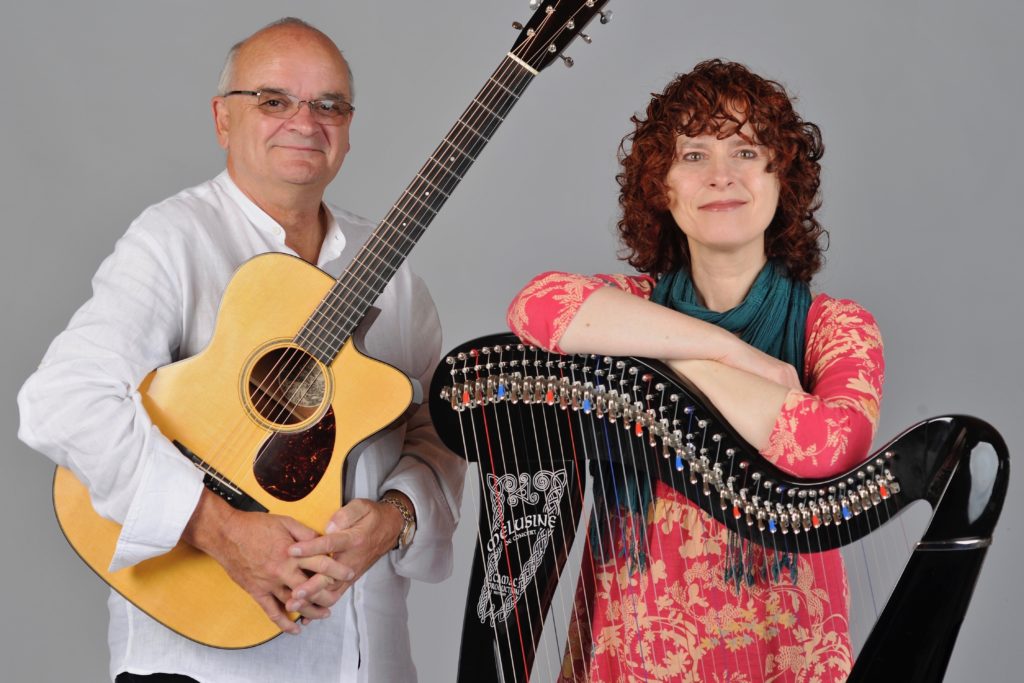
Chris Newman and Maire Ni Chathasaigh
Folk gig of the week: Maire Ni Chathasaigh and Chris Newman, Helmsley Arts Centre, February 8, 7.30pm
MULTIPLE award-winning, internationally renowned virtuoso harp and guitar duo Maire Ni Chathasaigh and Chris Newman return to Helmsley after playing to a full house there in December 2023.
County Cork harpist Chathasaigh and flat-picking guitarist, improviser, composer and record producer Newman have toured to 24 countries on five continents, playing venues ranging from village halls and town halls to palaces in Kyoto and Istanbul, from London’s Barbican to Cologne’s Philharmonia. Expect a fusion of traditional Irish music, hot jazz, bluegrass and baroque, spiced with new compositions and Newman’s subversive wit. Box office: 01439 771700 or helmsleyarts.co.uk.
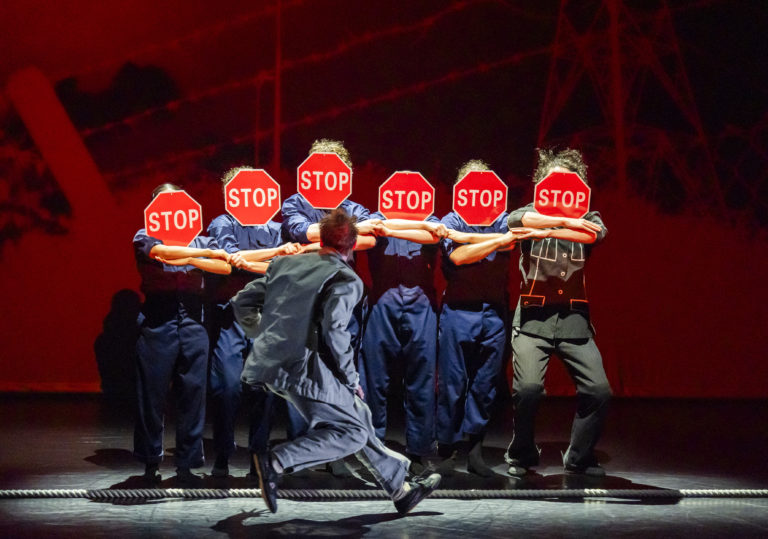
Dance show of the week: Jasmin Vardimon Company, York Theatre Royal, February 8, 2.30pm with post-show discussion and 7.30pm
NOW, a new creation by choreographer Jasmin Vardimon MBE, celebrates her company’s 25th anniversary in a work that reflects the current moment, the present, and the continuous movement of time in a terpsichorean toast to the beauty of imagination and art.
Rooted in her interest in contemporary lives, the structures of society and the ever-changing socio-political dynamics, Vardimon uses her distinctive dance theatre style to tell a story of our time with an international cast of performers and relevant, iconic moments from the Ashford, Kent company’s repertoire. Box office: 01904 623568 or yorktheatreroyal.co.uk.
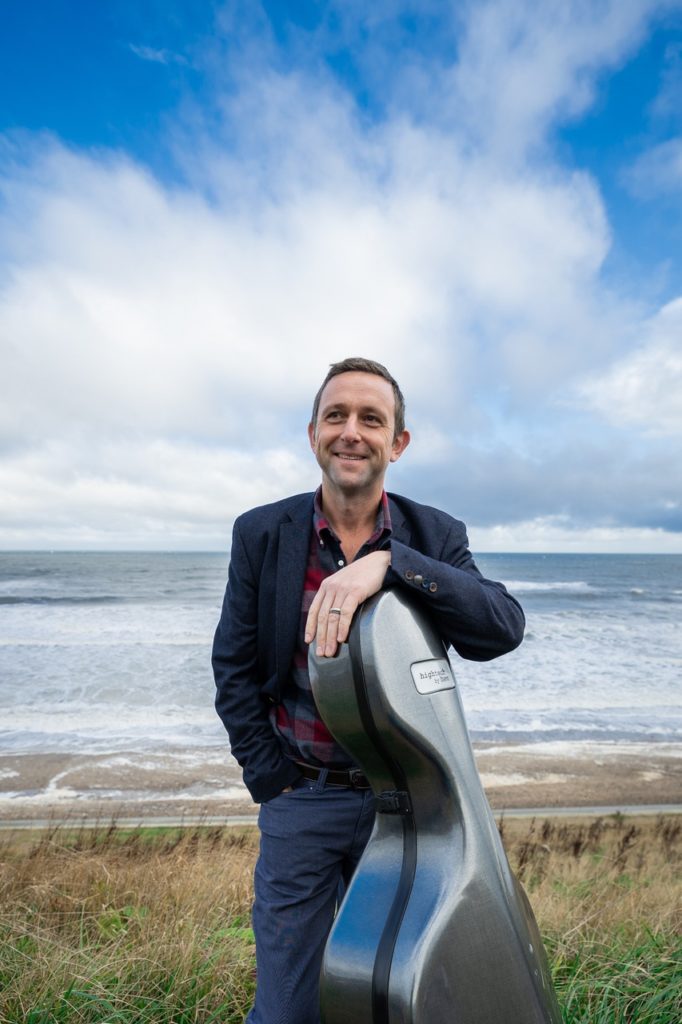
Jamie Walton: Cello soloist at York Guildhall Orchestra’s concert at York Barbican
Classical concerts of the week: Yorkshire Bach Choir, Bach To The Future, St Lawrence Parish Church, York, February 8, 7.30pm; York Guildhall Orchestra: Sibelius, Bloch, Tchaikovsky & Shostakovich, York Barbican, February 9, 3pm
PETER Seymour conducts Yorkshire Bach Choir on a choral journey through German polyphony, including music by Schutz, Johann Bach, JS Bach, Mendelssohn, Brahms and Rheinberger. Professor Thomas Schmidt gives a pre-concert talk at 6.45pm. Box office: 01904 658338 or ncem.co.uk.
Jamie Walton, cellist and North York Moors Chamber Music Festival artistic director, will be the soloist for Ernst Bloch’s “rarely played, but utterly beautiful” Shelomo in February 9’s concert by the York Guildhall Orchestra. Sibelius’s Karelia Suite, Tchaikovsky’s Romeo And Juliet and Shostakovic’s Symphony No. 9 in Eb feature too in conductor Simon Wright’s programme. Box office: yorkbarbican.co.uk.

Dominic Halpin & The Hurricanes in A Country Night In Nashville
Country gig of the week: A Country Night In Nashville, Grand Opera House, York, February 9, 7.30pm
DOMINIC Halpin & The Hurricanes re-create a buzzing honky-tonk in downtown Nashville, capturing the energy and atmosphere of an evening in the home of country music, featuring songs from its biggest stars both past and present: Johnny Cash to Alan Jackson, Dolly Parton to The Chicks, Willie Nelson to Kacey Musgraves. Box office: atgtickets.com/york.
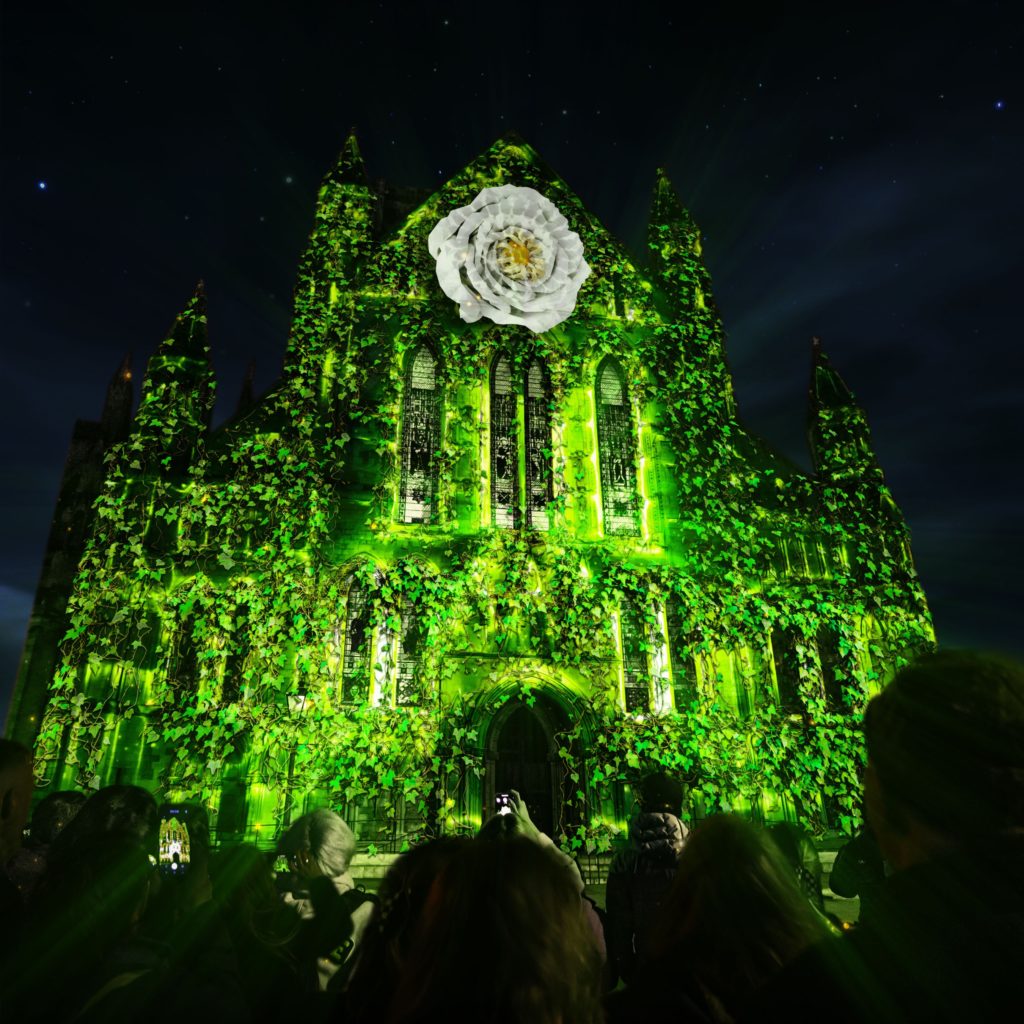
Colour & Light framing the South Transept of York Minster
Illumination of the week: Colour & Light, York Minster South Transept, February 12 to March 2
THIS free outdoor event promises a “mesmerising projection” of famous and lesser-known stories of York’s animal world, from the peregrine falcons that call the Minster home and the foxes that roam the city after dark, to the horses on which the Romans rode into Eboracum and the legendary dragons carved into York’s history.
Colour & Light will run nightly from 6pm to 9pm with projections on a ten-minute loop. The final hour each evening will feature a designated quiet hour with reduced noise and crowd levels, ensuring everyone can enjoy the event. No tickets are required.

Children’s pop concert of the week: Pop Princesses World Tour, Grand Opera House, York, February 13, 6pm
IN a magical show where four fabulous fairytale princesses become pop stars on an epic adventure, they just love to sing the hits of Taylor Swift, Meghan Trainor, Miley Cyrus, Dua Lipa and Lizzo, complemented by a few of the best songs from all your favourite films and musicals. Box office: atgtickets.com/york.

Emma Swainston’s Elle Woods in York Light Opera Company’s Legally Blonde The Musical
Musical of the week: York Light Opera Company in Legally Blonde The Musical, York Theatre Royal, February 13 to 22, 7.30pm nightly (except February 16) plus 2.30pm matinees on February 15, 20
JOIN Elle Woods, a seemingly ditzy sorority girl with a heart of gold, as she tackles Harvard Law School to win back her man. Along the way Elle discovers her own strength and intelligence, proving that you can be both a beautiful blonde and brilliant.
Emma Swainston’s Elle Woods leads Martyn Knight’s 35-strong cast in this feel-good, sassy and stylish show with a powerful message about staying true to yourself, music and lyrics by Laurence O’Keefe and Nell Benjamin and book by Heather Hach. Box office: 01904 623568 or yorktheatreroyal.co.uk.
Festival of the week: National Parks Dark Skies Festival, North York Moors, February 14 to March 2
THIS year is the tenth anniversary of the Dark Skies Festival and where better to celebrate than on the North York Moors, one of only 21 locations in the world to be recognised for pristine, dark skies as an International Dark Sky Reserve.
Look out for Stargazing Experiences in Dalby Forest; Stargazing at Ampleforth Abbey; the Robin Hood’s Bay Dark Skies Ghost Walks; Evening Adventure Walks with River Mountain Rescue; a Night Navigation Experience with Large Outdoors; Dancing with The Long Dead Stars (and a walk to Boggle Hole) and plenty more. For full details, visit: darkskiesnationalparks.org.uk/north-york-moors-events.





